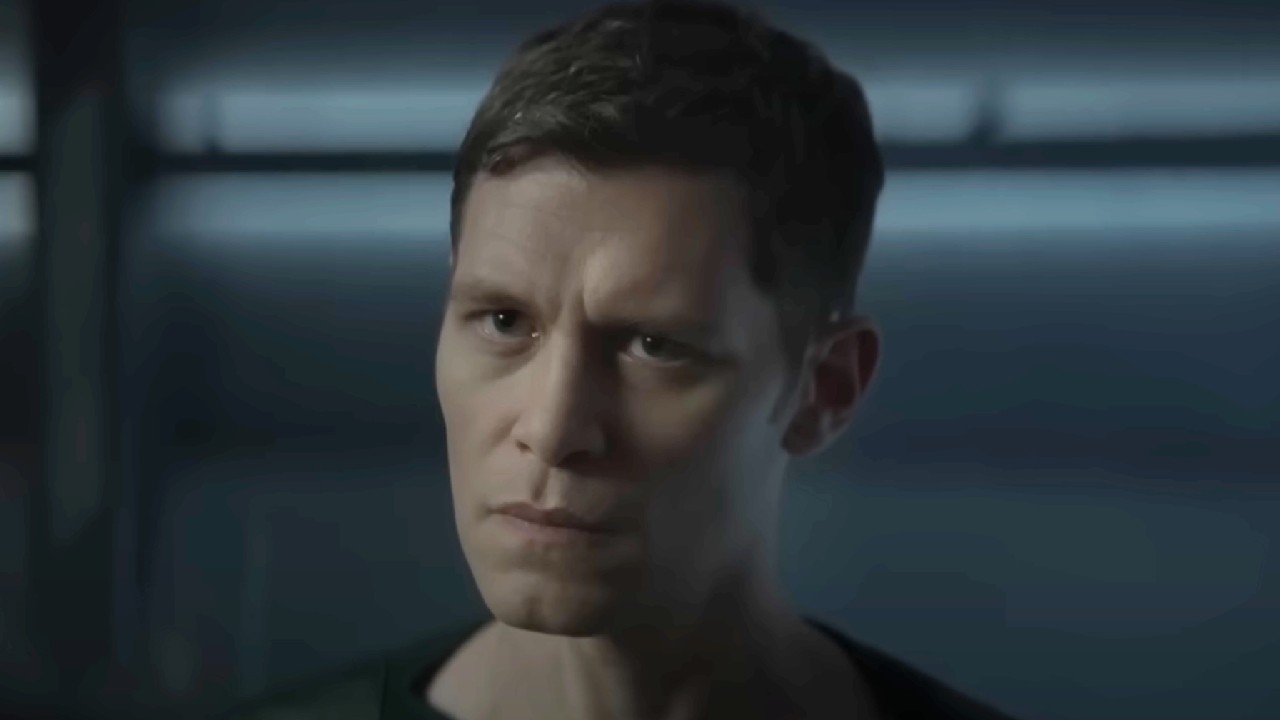What Is Halo's Spartan-III Program? What We Know About James Ackerson's Season 2 Plan From The Novels
Humanity is changing strategies.

Warning! The following contains SPOILERS for the Halo Season 2 episode "Aleria." Read at your own risk!
Reach has fallen, and while the planet is gone, Master Chief, Soren, Halsey and Riz were able to escape with Vannak's body thanks to a ship transport driven by Laera and Kwan Ha. The latest Halo episode granted the heroes a chance to recover on another human settlement and pick up the pieces, but it was the end of the episode that had me stunned. James Ackerson returned with Kai, and she was seen addressing a ton of different-looking soldiers, likely the result of the Spartan-III program. So, what is all that about? Here's what we know from the books.
Before we dive in fully, it's worth noting that the Halo series exists in what's called The Silver Timeline, which means it's separate from both the books and games, while drawing elements of both. As such, some of what we're talking about below may differ as we stream the rest of Season 2 with our Paramount+ subscription. With that said, the advantages of Spartan-III over its predecessors are clear, and I don't see that changing.
What Is The Spartan-III Program?
The Spartan-III program was a secret project commissioned by ONI to make a super soldier cheaper and more expendable than the Spartan-II program. They'd choose from a pool of candidates of orphaned children who lost their parents in colonies or planets destroyed by the Covenant. While expendable, the thought was these soldiers would help better push back against the scores of Covenant forces.
Why Did James Ackerson Advocate For Spartan-III
In the novels, James Ackerson is seen as a rival to Dr. Halsey, and as such wants to discredit her Spartan-II program with what he believes to be the vastly superior Spartan-III program. This includes a discreet attempt to kill Master Chief, but he's ultimately unsuccessful. The Silver Timeline has shown Ackerson's attempts to discredit John and put him in harm's way, but his motive for Spartan-III appears to be a bit different.
As we learned in a previous Halo episode, Ackerson's sister was selected for Halsey's Spartan-II training. She ended up dying from the augmentations, so I could see Ackerson's different methods for Spartan-III being a reflection on the failures of Spartan-III. Perhaps this is why Joseph Morgan told CinemaBlend he doesn't see Ackerson as a villain, because there is a method to his thinking. I still would think he's the biggest villain of the Halo cast, even if there is a method to the madness.
Are Spartan-III's Better Than Master Chief And Spartan-II's?
There's certainly room for debate when it comes to talking about if Spartan-III's are better than Spartan-II's, though it's somewhat like comparing apples to oranges. Both are augmented soldiers trained to take the fight to the Covenant, but there are differences in how they're augmented and trained in a way that creates better fits depending on the situation.
Your Daily Blend of Entertainment News

Spartan-II's were brilliant children kidnapped and further augmented using radical surgeries and technological advancements. As a result, they're smart, super-human battle machines and can effectively be a one-man army when fully suited up. The downside is many children don't survive the augmentation process, and the cost to create a Spartan-II from start to finish is quite expensive.
Spartan-III's are much cheaper by comparison and drawn from a wider pool of orphaned children. These soldiers are augmented via chemical means, leading to higher survivability and being trained extensively on battle strategy and a reliance on teamwork. The end result is that exponentially more Spartan-III's can be produced than Spartan-II's, though they're made to be expendable. Spartan-III's are often sent out in droves for practical suicide missions, and while successful, few ever survive past their first mission.
It's hard to argue which is better because both were vital when it came to humanity's war against The Covenant. The parameters to create a successful Spartan-II were too stringent, and there weren't enough to go around to help win a war. Spartan-III's are numerous, but certainly bring up the theme showrunner David Wiener talked to CinemaBlend about whether Spartans are humans or weapons. I would wager we'll see that explored more in-depth once we see the Spartan-III's in action.
Halo streams new episodes on Paramount+ on Thursdays. Viewers are taking notice of the series following the fall of Reach, and I'm hoping it's getting enough views for the streamer to go ahead and give the green light to Season 3.

Mick Joest is a Content Producer for CinemaBlend with his hand in an eclectic mix of television goodness. Star Trek is his main jam, but he also regularly reports on happenings in the world of Star Trek, WWE, Doctor Who, 90 Day Fiancé, Quantum Leap, and Big Brother. He graduated from the University of Southern Indiana with a degree in Journalism and a minor in Radio and Television. He's great at hosting panels and appearing on podcasts if given the chance as well.
